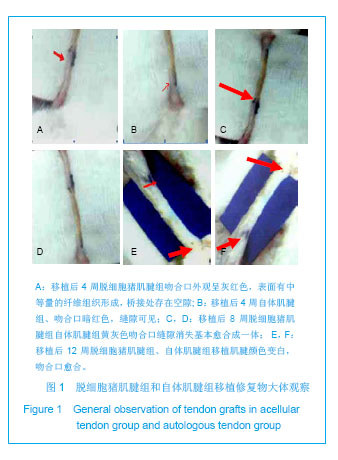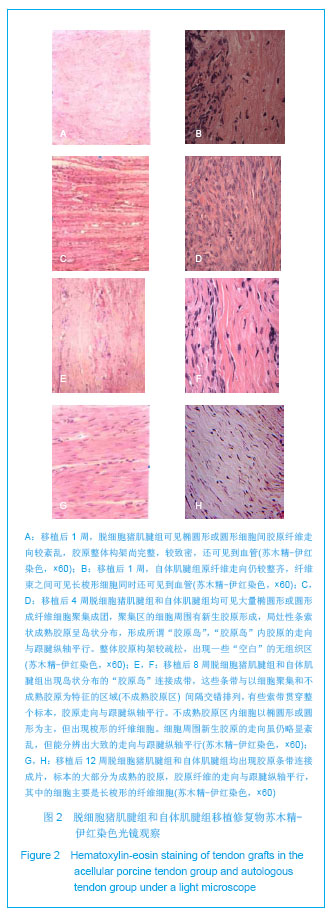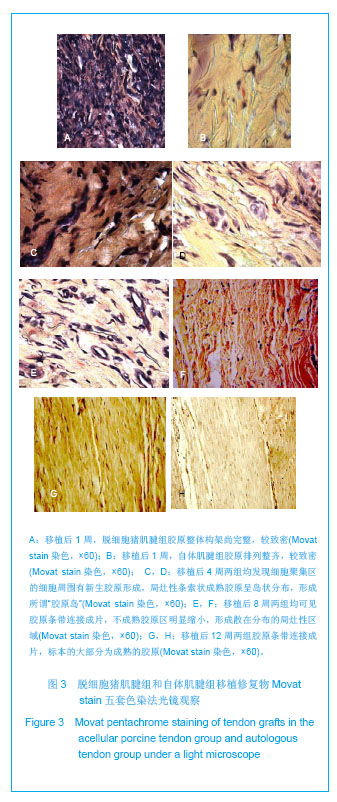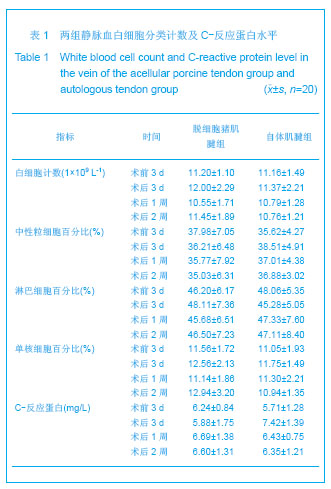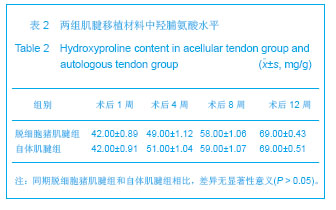中国组织工程研究 ›› 2013, Vol. 17 ›› Issue (16): 2968-2972.doi: 10.3969/j.issn.2095-4344.2013.16.017
• 细胞外基质材料 extracellular matrix materials • 上一篇 下一篇
脱细胞近交系微型猪肌腱修复兔跟腱缺损
靳宪辉1,张庆胜1,杨建博1,刘桂花1,魏 巍1,高春光1,林月秋2
- 1衡水市哈励逊国际和平医院骨科,河北省衡水市 053000
2解放军昆明总医院全军骨科中心,云南省昆明市 650032
Acellular tendon of mini-pig inbred-lines is used for Achilles tendon repair in a rabbit model
Jin Xian-hui1, Zhang Qing-sheng1, Yang Jian-bo1, Liu Gui-hua1, Wei Wei1, Gao Chun-guang1, Lin Yue-qiu2
- 1 Harison International Peace Hospital, Hengshui 053500, Hebei Province, China
2 The Army Orthopaedic Centre, Kunming General Hospital of PLA, Kunming 650032, Yunnan Province, China
摘要:
背景:异体肌腱移植是目前修复肌腱缺损的理想方法,但移植后的排斥反应是其使用受到限制的主要原因。 目的:观察脱细胞处理的版纳近交系微型猪肌腱移植修复兔跟腱缺损的疗效,以及其作为异种肌腱移植支架材料的可行性。 方法:将40只日本大白兔制作双后肢跟腱缺损实验动物模型后,随机均分为2组,脱细胞猪肌腱组用脱细胞版纳近交系微型猪肌腱修复,自体肌腱组用自体肌腱修复,术后用3-0肌腱线改良HEMI-KESSLER法进行端端原位吻合。 结果与结论:①移植后2周内,脱细胞猪肌腱组与自体肌腱组白细胞计数、C-反应蛋白测量结果差异无显著性意义(P > 0.05)。②两组移植后局部反应小,伤口一期愈合,屈踝功能恢复正常。③组织学检查均未见明显淋巴细胞浸润,肌腱缝合处胶原纤维相互衔接。结果说明脱细胞版纳近交系微型猪肌腱能成功修复兔跟腱缺损,且具有组织相容性好、移植排斥反应轻的优点。
中图分类号:
